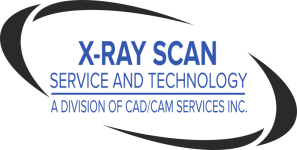X-Ray Film Scanners and Digitizers, X-Ray Film Scanning Services and Software
X-ray Scanner to Digital Images
posted Oct-21-2014There are many reasons why a healthcare organization decides to purchase an X-ray scanner and begins to digitize their medical X-ray films, not the least of which is converting to Electronic Medical Records (EMR). Because scanning the x-ray film is one part of the much larger organizational change required when going from paper-based processes to digital-based processes, it behooves us to look at the entire process in the context of retention requirements.

Even if a physician is no longer seeing a patient, there are legal requirements for records retention. A number of variables affect the length of time a physician should keep a medical record, including X-ray images. Factors include state and federal laws, medical board and association policies, and the type of record (for example, that of an adult patient versus that of a pediatric patient).
Aside from legal requirements, the most important reason for keeping a medical record or X-ray image is to provide information on a patient’s care to other healthcare professionals. Another major rationale is that a well-documented medical record provides support for the physician’s defense in the event of a medical malpractice action.
In general, most state and federal laws require healthcare organizations to retain medical data for 5 to 7 years, while OSHA requires an employer to retain medical records for 30 years for employees who have been exposed to toxic substances and harmful agents. HIPAA privacy regulations require records to be retained for six years from when the record was created,
Because medical record retention laws and regulations differ from state to state it is often better to err on the side of caution, and retain records rather than destroy them. When files are in paper and film format, the cost of storage, plus file deterioration can make it impractical to archive for longer than the bare legal minimum. However, it’s important to remember that once a record is destroyed, it is gone, and could make it difficult—if not impossible—to defend a case.
With the advent electronic records, archiving of both medical film images and paper records has become less space dependent and more cost effective. Scanning paper records, while time consuming is relatively straightforward, provided HIPAA requirements are met.
Scanning X-ray film is not so straight forward, in that film digitizing of any kind, requires specialized equipment and some knowledge of the digital manipulation of images. Film digitizers are a specialized technology that is available for scanning X-ray radiographs. There are a number of different brands and models available and it is recommend that you choose carefully, based upon your needs:
VIDAR DiagnosticPro Edge X-Ray Film Digitizer – For PACS & remote primary diagnosis. Ideal for Radiography or Mammography. Improves productivity and workflow. World-class reliability and service.
VIDAR DiagnosticPro Advantage X-Ray Film Digitizer – For PACS & remote primary diagnosis. Ideal for Radiography or Mammography. Improves productivity and workflow. World-class reliability and service.
VIDAR SIERRA Advantage X-Ray Film Digitizer – Ideal for cost-effective use in teleradiology, small imaging centers, and emergency rooms. Clinically proven image quality and consistency. Improves productivity and workflow.
VIDAR CadPro Advantage X-Ray Film Digitizer – Ideal for mammography CAD. Uses DICOM MG standard. Clinically proven image quality and consistency. Ideal for mammography facilities transitioning to FFDM. Improves productivity and workflow.
VIDAR DosimetryPro Advantage X-Ray Film Digitizer – Ideal for QA and IMRT. Supports GAFCHROMIC EBT film dosimetry. Superior reproducibility and highest reliability for maximum “uptime”.
IDD X-Ray Film and Paper Digitizer S6000 Series – Digitizes x-ray films and paper documents
Kodak LS75 X-Ray Film Digitizer – Ideal For PACS, teleradiology, and film duplication. Self-calibrating and unaffected by ambient light. Excellent image quality. Easy integration. Workflow efficiency
Radlink LaserPro16™ X-Ray Film Digitizer – Laser Accuracy for Diagnostic PACS and Teleradiology Applications. High image quality. Precise grayscale accuracy.
Microtek Medi-5000 X-ray Film Digitizer – Hi-speed digitizer for X-ray mammography films
Microtek Medi-6000 Plus X-ray Film Digitizer – Hi-speed digitizer for X-ray mammography films
Microtek Medi-7000 X-ray Film Digitizer – High End X-Ray Digitizer. 7 Seconds per Chest X-Ray.
Conclusion
Whatever reasons a medical organization has for digitizing their X-ray film, erring on the side of caution for length of retention is advisable, as is choosing the right X-ray scanner for the job. When it comes to scanning X-rays, a quality digital image is essential.

